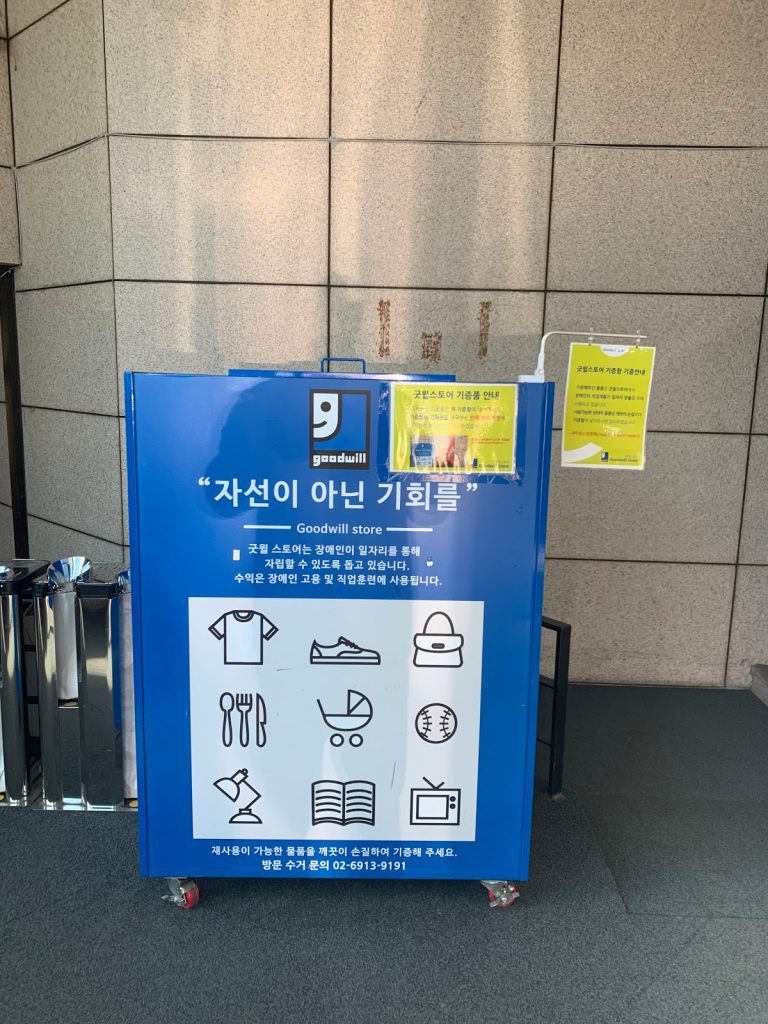Do you often see donation boxes walking on the streets? Donation boxes are generally operated by organizations that manage donated goods. When someone puts in clothes, kitchen appliances, or other miscellaneous items that are no longer used, the organization 1) collects the items, 2) sells the goods to general customers in offline stores, and 3) sponsors and supports social services and programs with the money made from the sale.
If you are not paying particular attention, you may not realize the number of donation boxes you are passing by. If you pause and take a look around, you will notice there will be quite a few. Among the organizations that operate such donation boxes, Goodwill Industries (Goodwill) is one of the most well known. It generates a global revenue exceeding 5 billion USD and after taking out operational costs, uses 83% of its profits on job training and employment programs for people who are facing various barriers that prevent them from obtaining a job. It operates over 3000 stores in 12 countries.
Wanting to improve their donation operations, Goodwill contacted Ecube Labs last year. Some of the issues they faced included:
- Not being able to know the fullness of the donation box just by looking at it from the outside. This was mainly due to the shape and characteristics of the donation box.
- Not knowing the exact rate at which specific donation boxes were filling up. This is because the filling rate of boxes varies greatly by region.
- Limited potential to contribute to social programs due to the costs involved in regularly visiting the donation boxes.
Ecube Labs strongly believed in Goodwill’s mission and was confident that these issues could be solved with our products. Our solution was to install fill-level sensors (CleanFLEX) in 50 of Goodwill’s donation boxes, with each sensor wirelessly transmitting the fill-level data to the monitoring software CleanCityNetworks (CCN). Using the sensor and monitoring platform, Goodwill was able to see how full each donation box was at a glance without having to visit or open up each one of them.
By reducing the frequency of collections, Goodwill was able to reallocate sources to sponsor more programs and individuals. For organizations such as Goodwill, UNICEF, and The Salvation Army that are directing contributions from sponsors and patrons to disadvantaged people, improving operational efficiency is of utmost importance. Saving cost, time, and energy during operations maximizes the amount of support that goes to the intended beneficiaries.
Having optimized Goodwill stores’ operations, Ecube Labs advanced Goodwill’s goal—to provide for the greater community. We look forward to helping more organizations achieve their vision for a better society.

